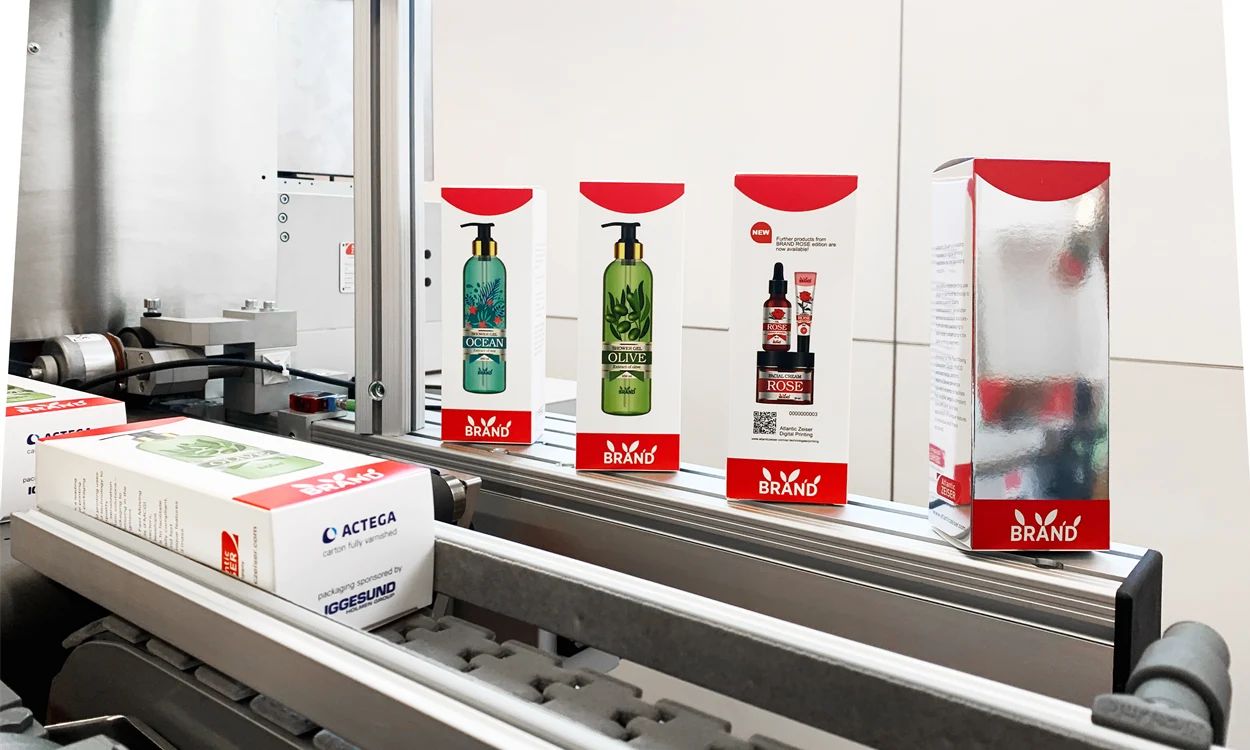The latest technological advances in printing mean that it’s now possible to digitally print full colour directly onto an erected carton. Previously limited to either an unglued or a pre-glued box, both of which would then need to be assembled, new Inkjet technology allows you to print when the product is already inside the carton. This late-stage packaging customisation means that the process can be personalised, is cost-effective and better for the environment.
As a leading supplier of advanced individualisation, serialisation, and track & trace solutions, Atlantic Zeiser is at the forefront of this new technology. We spoke to Jeevan Sarahana, Sales Manager of consumer goods at Atlantic Zeiser, to get his thoughts on how this new tech is changing the face of packaging.
Not only can you print at such a late stage, but the new individualisation and track & trace systems can protect against counterfeiters and monitor product trails.
“This new safety information can effectively eliminate the grey market through fingerprints from the ink and ingredients that we’re able to track. This reduces the possibility of manipulated pills and counterfeit brands,” he says.
The benefits of this technology are plentiful, a major plus being that it reduces waste, which makes it more environmentally friendly. Packaging is generally seen as a long-run print application, with typical print runs of thousands. So, if you needed to change details on the box halfway through the manufacturing process, all the packaging in that run would be useless. Now you can print the amount you need, starting with far smaller numbers and adding more as and when you want. And of course, no longer throwing the cartons away means plenty of cost savings too.
Jeevan says, “Quantity was a challenge. With the old methods, say for example you want to make some exclusive boxes, you must produce around two thousand of them – then if they don’t sell, you lose a lot of money. Now we can print what you want on demand.”
Time to market is also a lot quicker. What used to take between two to six months now takes a couple of weeks, and the cost of changeover reduces lead time. Jeevan adds, “Most products are too late to the supermarket shelf. As this process is so much quicker, there will be minimal loss of sales. And with variable printing, you can get an overview of what’s working and what’s not.”
Personalisation is another key factor. For example, it’s much easier to include specific information like different languages, individual market information, shelf-life details, and traceability data.
“For example, you can design specifically for the German, British or Indian market,” says Jeevan “Maybe you want to promote tickets for a concert in Japan – now it’s a lot simpler to include that on your packaging.”
“As this process is so much quicker, there will be minimal loss of sales. And with variable printing, you can get an overview of what’s working and what’s not.”
— Jeevan Sarahana.
Conventional printing has traditionally been made for mass production in retail supply chains. Nowadays, consumers have more complex and individual desires.
Jeevan gives an example of one of the clients at Atlantic Zeiser that he describes as ‘"being at the forefront of personalised packaging’ – Lete.
An Italian producer of mineral water, Lete, is a sponsor of Italian football. Atlantic Zeiser helped eliminate sixty per cent of their costs by creating hype through their packaging. By personalising their bottle tops into different water-drop emojis and coining them ‘Letemoji’s’, they managed to turn their bottles into fun collectables that have become a big hit with kids across Italy. Now, instead of swapping football cards in the playground, they’re going crazy for the bottle tops! Another answer to progress in personalisation, says Jeevan, is Inkjet printing.
“Everything has been geared to the old methods, but things are changing. Right now, we’re in the early stages, but we need to think more about Inkjet in artwork and take on the advances. With Inkjet, the baby has now stood up and is starting to walk.”
He goes on, “Now you can make one package and then have the second one look totally different, which of course means less risk. Right now, things take days instead of months to produce. No minimum order quantity. Flexibility and agility are the code words.”
So, what does Jeevan see as the next step in printing?
“Using water-based or hybrid ink,” he says. “It has a higher speed, it’s reliable and has great resolution.” You heard it here first!
Created 28 November, 2019.


